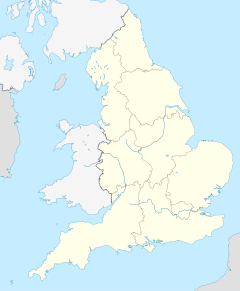Castle Hedingham
| Castle Hedingham | ||
|---|---|---|
| St. James Street, Castle Hedingham | ||
| Coordinates | 51 ° 59 ′ N , 0 ° 36 ′ E | |
|
|
||
| Residents | 1000 | |
| administration | ||
| Post town | HALSTEAD | |
| prefix | 01787 | |
| Part of the country | England | |
| region | East of England | |
| Shire county | Essex | |
| District | Braintree | |
Castle Hedingham is a village in the northeastern English county of Essex , located in the valley of the Colne on the ancient road from Colchester to Cambridge located.
The village developed around Hedingham Castle , the ancestral seat of the de Veres, the Earls of Oxford . The first earl, Aubrey III. Vere de , completed the construction of the keep and erected near a Benedictine abbey. Hugh de Vere, 4th Earl of Oxford received market rights for the village in the mid-13th century and laid the foundation stone for a hospital around 1250.
The Church of St. Nicholas from the late Romanesque and Gothic times was built around 1180. The fine double hammer-beam vault is attributed to Thomas Loveday, who was also responsible for the work at St John's College in Cambridge.
The village was on the Colne Valley & Halstead Railway Company railway line from 1867 to 1964 . The old station was the 1974 Colne Valley Railway Preservation Society dismantled and as a heritage railway Colne Valley Railway built at a new location in the northwest of the village again.

